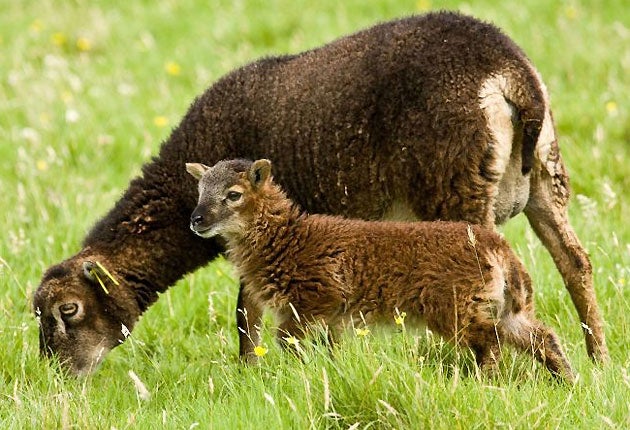How global warming shrank St Kilda's sheep
Darwinism turned on its head as milder winters allow smaller lambs to survive

It was the curious case of the shrinking sheep. For nearly a quarter of a century the wild Soay sheep on the windswept Scottish island of Hirta have been getting smaller when evolution should have made them bigger.
It was a conundrum that had mystified the scientists who began studying the flock back in the mid-1980s, but now they believe they have come up with a convincing explanation: it all comes down to climate change.
A succession of milder winters and earlier springs have allowed smaller lambs to survive the harsh Hirta winters, with the result that the average body size of the typical Soay ewe has shrunk by about 5 per cent over the past 24 years.
Scientists believe that the findings might begin to explain the subtle interactions between ecological pressures that act on a species' body size over short periods, and the longer-term evolutionary pressures that can lead to the sort of extreme "island dwarfism" seen in fossils of extinct animals trapped on islands, such as pygmy hippos and dwarf elephants.
"Our findings have solved a paradox that has tormented biologists for years – why predictions did not match observation," said Professor Tim Coulson, of Imperial College London, who led the study, published in the journal Science, with colleagues Josephine Pemberton and Tim Clutton-Brock.
The Soay sheep fatten up on the lush grass during summer, in the hope that this will take them through the long winter when food is in short supply. Evolutionary theory suggested that the bigger sheep with the most fat would be the most likely members of the flock to survive until the following spring.
"According to classic evolutionary theory, they should have been getting bigger, because larger sheep tend to be more likely to survive and reproduce than smaller ones, and offspring tend to resemble their parents," said Professor Coulson.
But the scientists found that over the course of their observations, which dated back to the 1980s, the average size of female sheep has been getting smaller, largely because smaller lambs that in the past would not have made it through the bitter winter months were beginning to survive until the following spring.
They found that a typical ewe was getting smaller each year by between 80g and 100g, and that lambs were not growing as quickly as before. Previously, the larger lambs that put on weight the fastest during their first summer were the most likely to survive until the following spring. "Climate change has moved spring a little bit earlier and as spring came earlier, fewer sheep were dying," said Professor Coulson. "This decline in the growth rate has also led to an increase in the population size of the Soay flock."
Another contribution to the remarkable case was what the scientists called the "young-mum effect". They found that ewes pregnant for the first time were physically incapable of giving birth to large lambs, which means that there is a constant flow of small lambs being born.
This runs counter to the evolutionary pressure for larger lambs and the scientists are still unsure about the reasons for the persistence of the young-mum effect, although it forms an important part of the explanation for smaller sheep.
As to what will happen in future years, Professor Coulson is more reticent. "It's a little bit early to predict that we'll be having Chihuahuas running around herding pygmy sheep in say a hundred years from now," he said.
Island wildlife: From giants rats to pygmy hippos
When animals and plants get trapped on an island, weird things begin to happen. They sometimes evolve over many thousands of years into smaller versions. Sometimes they get bigger – such as the giant extinct rats of Indonesia that grew to the size of a small dog, or the tall dandelion trees of Madeira.
On the Galapagos Islands, Charles Darwin was amazed by the sight of giant tortoises. With an absence of predators, the long-living reptiles could evolve into forms larger than their mainland ancestors.
Fossils of pygmy mammoths have been found on Wrangel Island off northern Siberia. They had become trapped on the island for many centuries before dying out, and may have been the last mammoths on Earth.
Similar fossils of dwarf elephants have been found on Malta, as well as the remains of pygmy hippos in Madagascar. It is believed that such large animals evolved into dwarf forms in response to the limited food resources that could support such large herbivores on an island.
Join our commenting forum
Join thought-provoking conversations, follow other Independent readers and see their replies
0Comments